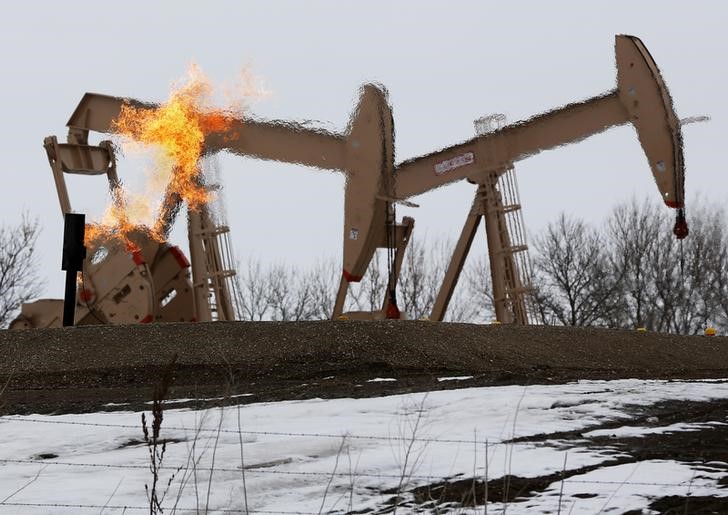
© Reuters.
LCO
+0.32%
Add to/Remove from Watchlist
Add to Watchlist
Add Position
Position added successfully to:
Please name your holdings portfolio
Type:
BUY
SELL
Date:
Amount:
Price
Point Value:
Leverage:
1:1
1:10
1:25
1:50
1:100
1:200
1:400
1:500
1:1000
Commission:
Create New Watchlist
Create
Create a new holdings portfolio
Add
Create
+ Add another position
Close
CL
+0.36%
Add to/Remove from Watchlist
Add to Watchlist
Add Position
Position added successfully to:
Please name your holdings portfolio
Type:
BUY
SELL
Date:
Amount:
Price
Point Value:
Leverage:
1:1
1:10
1:25
1:50
1:100
1:200
1:400
1:500
1:1000
Commission:
Create New Watchlist
Create
Create a new holdings portfolio
Add
Create
+ Add another position
Close
Investing.com– Oil prices rose in early Asian trade on Tuesday, extending gains into a third straight session as markets bet on an improvement in U.S. fuel demand ahead of the memorial day weekend, while a positive tone from lawmakers on raising the debt ceiling also aided sentiment.
U.S. gasoline futures shot up this week as markets bet that fuel consumption will pick up with the start of the summer season, which is usually marked by the memorial day weekend.
A sustained drop in U.S. gasoline inventories over the past two weeks also indicated that demand was picking up. This, coupled with disruptions in Canadian supply due to wildfires in the oil-rich Alberta province, pointed to tighter oil markets in the coming months.
Brent oil futures rose 0.5% to $76.42 a barrel, while West Texas Intermediate crude futures rose 0.6% to $72.50 a barrel by 21:33 ET (01:33 GMT). Both contracts were set for a third straight day of gains.
Positive comments from Democrat and Republican lawmakers on reaching a potential deal to raise the U.S. spending limit also aided sentiment, as House Speaker Kevin McCarthy said that Americans should not prepare for a U.S. default.
The debt ceiling has been a key source of concern for markets over the past few weeks, amid concerns over the economic fallout from a potential U.S. default. Treasury Secretary Janet Yellen flagged a mid-June deadline for the U.S. government to run out of funding.
But despite the positive cues, oil prices were still trading lower so far in 2023, hit chiefly by concerns over slowing economic growth and weaker-than-expected Chinese demand.
Disappointing economic indicators from the world’s largest oil importer battered crude prices over the past month, as markets second-guessed forecasts that China will drive oil demand to record highs this year.
An economic rebound in the country appeared to be slowing after a strong first quarter, which also saw the country’s oil imports drop through April.
Still, both the OPEC and the International Energy Agency recently reiterated their forecasts for Chinese demand this year, and forecast a wide shortfall in global oil supply in the second half of the year.
Uncertainty over the path of U.S. monetary policy also weighed on oil markets in recent weeks, as markets bet that U.S. interest rates will stay higher for longer, pressuring economic activity.
Source: Investing.com



























